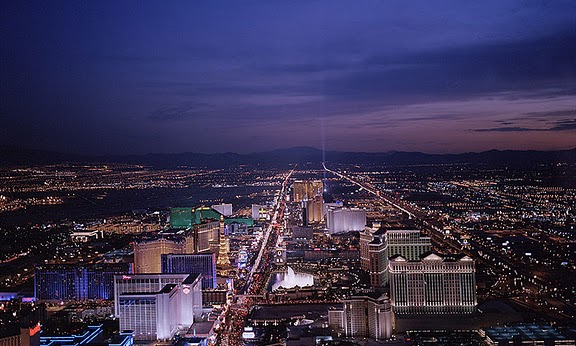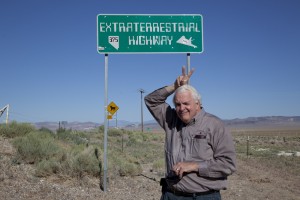One hundred-forty-seven postings into this blogging adventure, I’m taking stock, tweaking a few things — not tweeting; tweaking, though we’ll talk social media in a bit — and fixing to invite you to share even more than you are in my exploration of the American landscape and experience.

I remember the time, eight years ago, that my editor, Rob Sivak, asked me to write a VOA feature story about blogging — battlefront blogs from the war in Iraq in particular. Blogs by soldiers using pseudonyms were a hot topic at the time.
Rob might as well have asked me to write about clogs or frogs or bogs. I knew as much about them as I did about blogs. Here’s some of what I ended up writing back in 1993:
Because of the work of Edward R. Murrow and other correspondents, World War Two was a “radio war.” And Vietnam was legendary as a “television war,” in which battle scenes were beamed into people’s homes. Now, some say the War in Iraq has become the first “Internet War” because of a phenomenon called “blogging.”

The first American blogger? Had she had the technology, I have no doubt that she would have been. (Roddy17, Wikipedia Commons)
“Blog” is shorthand for “web log.” It’s a snappy, high-tech variation of the old written diary, like those made famous by seventeenth-century English bureaucrat Samuel Pepys and U.S. Civil War diarist Mary Chestnut.
Blogging began in the 1980s in California’s Silicon Valley, as computer wizards shared technical treatises over the early Internet. Today thousands, possibly millions, of people are revealing their thoughts on a host of subjects on the Web. Blogs by famous reporters, humorists and average citizens alike are posted online, often updated several times a day, and read enthusiastically by a worldwide community of other bloggers and Web surfers.
These days, blogs are more than Internet diaries. Some are platforms for quick, controversial, thoughtful — or ludicrously uninformed — spewings about world events, politics, and celebrities. Others have become go-to reads on niche subjects, from sailboats to sports trivia to science-fiction TV.
Three years ago, the Voice of America suggested that I, too, join the blogosphere, not to babble but to share experiences and personal observations from 40 years of travel to every U.S. state, every big city, most middle-sized ones, and small towns and crossroads from coast to coast.
No other journalist on staff, after all, had been to Rugby, North Dakota; Truth or Consequences, New Mexico; and Nevada’s Extraterrestrial Highway. Or if any had, none seemed all that eager to talk about it.
I had no interest in churning out some frothy travelogue, or in flacking for hotel chains or bed-and-breakfast inns, or in rating the “nose” of the wines of each region. For one thing, I’m more of a brat-and-a-beer kind of guy.
Rather, I wanted to share the findings born of my considerable curiosity, seasoned with a dash of history where I could unearth one. My intent has been to be a storyteller of unexpected yarns. True ones, though.
Yarns, don’t forget, can be built of complex, twisted threads. So my blogs are not fluff, like sea-foam fudge that melts on your tongue and practically disappears before you can swallow it. They can get dense — and longer than some of my “new media” colleagues would prefer. They worry that you’re too busy, distracted, picky, and overloaded to spend more than two minutes reading anything online.
I’ll have them know that I am “writing shorter” these days — not that it always shows — and that the site now gives you busy bees a convenient jump-off point if you’re not inclined to read the post in full.

Carol's photos, such as this moody view of foggy San Francisco, greatly enhance my stories. (Carol M. Highsmith)
Fortunately, I’m able to dress up the package with some catchy photographs, many taken by my renowned photographer wife — renowned as a photographer, not as my wife — Carol M. Highsmith, whose archive is among just six featured on the Library of Congress’s prints-and-photographs search page — and the only one produced by a living visual artist.
I welcome and frequently answer your comments, but I don’t find the blog format useful for true conversation. So it’s time to wade deeper into the social media surf.
Nine years ago, the very idea of blogging was strange and worrisome. After all, many blogs had no editors. Blogs revealed the innermost thoughts of journalists who, by tradition, were “supposed” to be impartial and impassive. And every Tom, Dick, Harry, and Aunt Sally was rushing everything from rants about religion to recipes for applesauce onto the Web.
Producing a blog that would stand out through the clutter was a challenge.
So, too, today is making sound use of social media, which experts have likened to a runaway train. We hop on, enjoy its amenities and power, but can’t be sure which tracks it may go down. Nor can we control or stop it.
Back when I started “Ted Landphair’s America,” a young colleague helped me set up Twitter and Facebook accounts, mostly because it seemed like the up-to-date thing to do. But I haven’t had the discipline to use Twitter for much more than posts-are-coming alerts. And my “Ted Landphair’s America” Facebook page has pretty much lain dormant.

A life-size bronze of Rip Van Winkle, sculpted by Richard Masloski, copyright 2000. (Daryl Samuel, Wikipedia Commons)
But like Rip Van Winkle — the Washington Irving character who awakens from years of slumber to find profound changes in his surroundings — the Facebook effort is about to stir. Having seen many Facebook success stories, including an incredible increase in dialogue with readers generated by the Facebook pages of VOA’s Asia, Africa, and Middle East hubs, I’m convinced that Facebook is an apt medium for expanding the impact of the “Ted Landphair’s America” blog.
It also gives me a platform on which to post other brief comments and spark conversations with you and other readers.
So I’m about to use the “Ted Landphair’s America” Facebook page to • post each blog • add short thoughts about what prompted or proved especially challenging about it • ask questions of you • invite give-and-take • seek suggestions (be gentle!) • and show you — and talk a bit about — some of the thousands of Carol’s captivating photos.

I'm thinking of using this sign as a warning that Wild Words are ahead! (Peter Shanks, Wikipedia Commons)
The podcasts at the top of each post, and my “Wild Words” that appear at the bottom and feed the cumulative Wild Words archive to the right, won’t change a bit.
You see, this isn’t re-inventing “Ted Landphair’s America.” Or an exact repetition of Rip Van Winkle’s experience.
It’s just a tweak or two featuring Facebook, my new best friend.

One more by Carol, from Las Vegas, just for the fun of it! (Carol M. Highsmith)
Ted's Wild Words
These are a few words from this posting that you may not know. Each time, I'll tell you a little about them and also place them into a cumulative archive of "Ted's Wild Words" in the right-hand column of the home page. Just click on it there, and if there's another word that you'd like me to explain, just ask!
Brat. The definition of this word depends on its pronunciation. A “braat” is a spoiled and temperamental child. A “brawt” is a German bratwurst sausage.
Flack. To promote, shill for. A public-relations person or promotion executive who touts clients’ work is also called a flack.



